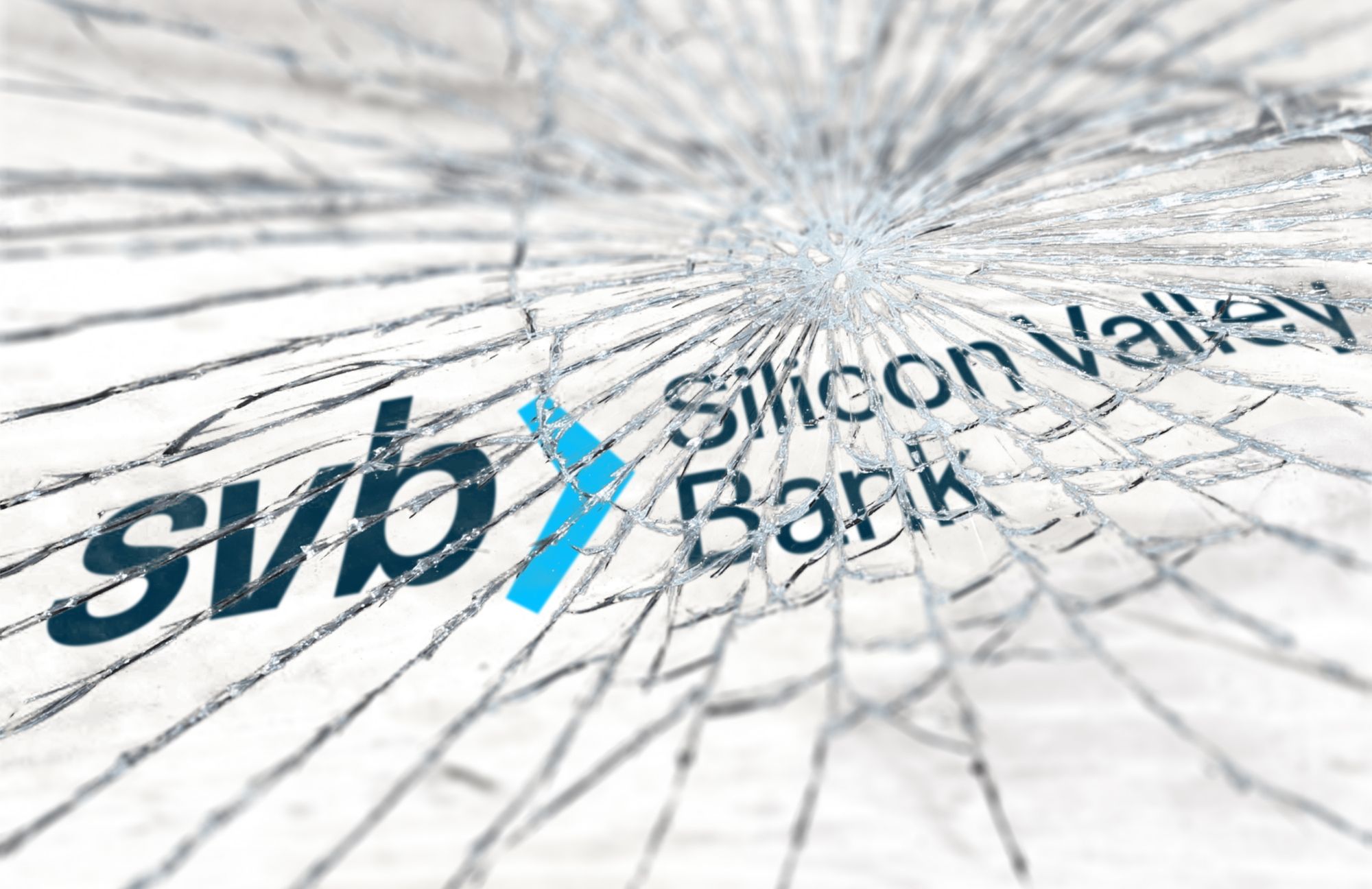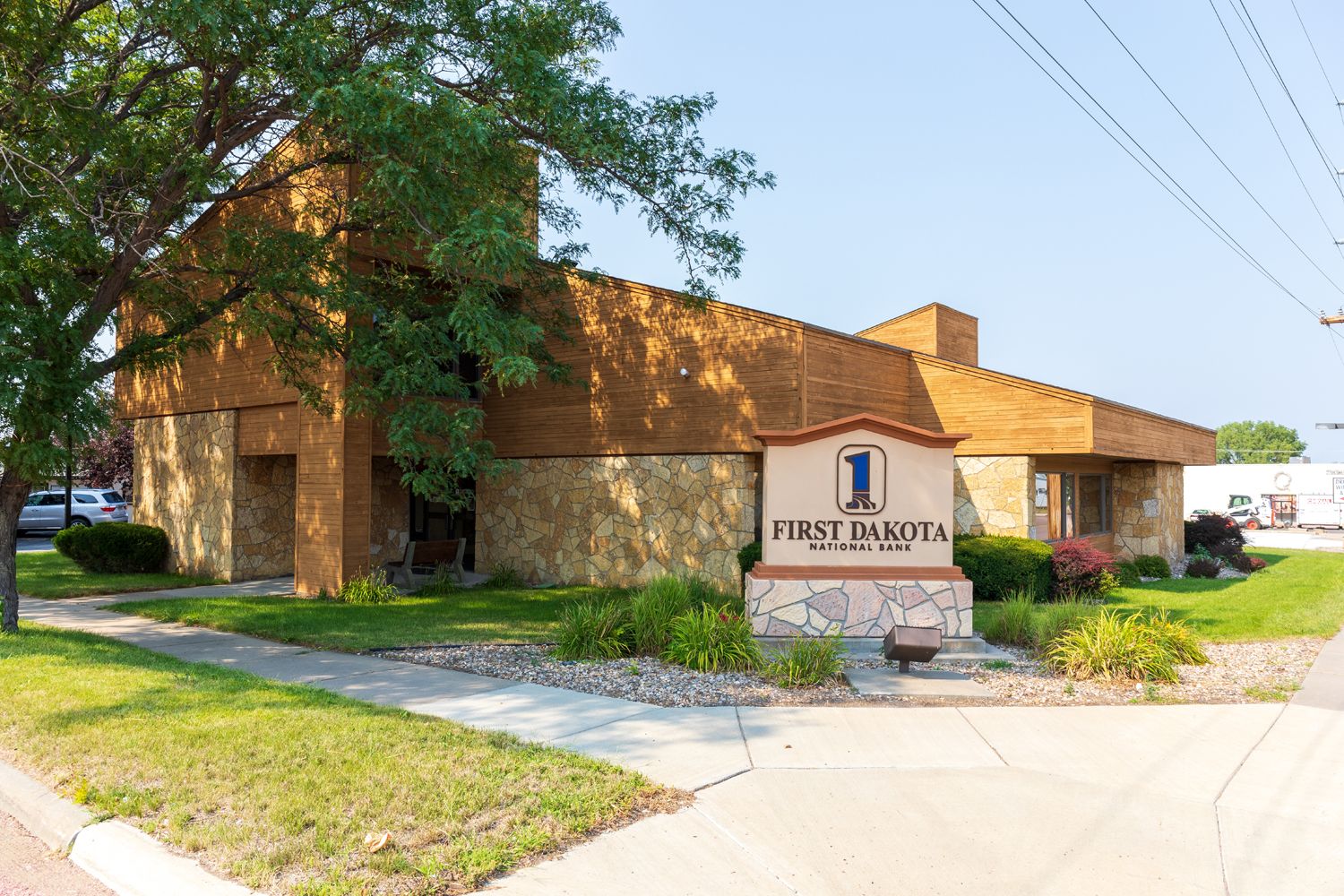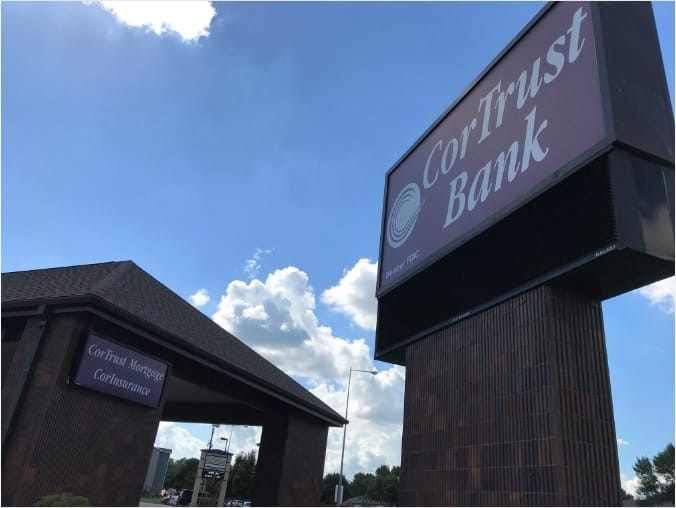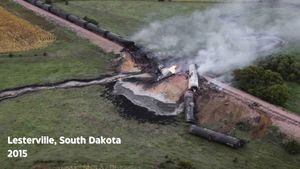At first glance, the forced closure of California-based Silicon Valley Bank and New York’s Signature Bank on March 10 – and the government action to quell the ensuing financial crisis – seemed worlds away from South Dakota’s regional banks.
Silicon Valley and Signature were coastal entities servicing mainly technology startups, with billions of dollars in deposits from venture capitalists vested in long-term government bonds, a far cry from the business model of most Great Plains community lenders.
But fiscal tremors have spread wide enough to put South Dakota bankers and politicians in a tough position, vouching for the security of the state’s financial systems and mindful of the notion that when it comes to potential bank runs, perception is reality.
“The key thing is for people to remain calm,” South Dakota Bankers Association president Karl Adam said from Washington, D.C., where he met with Sens. Mike Rounds and John Thune as part of a previously scheduled banking summit. “This is no time to take out your money to bury in your backyard or put it under your mattress.”
South Dakota banks respond proactively to California failures
That message gained urgency on March 13, the Monday after the banks failed. State treasurer Josh Haeder got a call from First Premier Bank in Sioux Falls, the state’s bank for more than two decades.
First Premier bankers assured Haeder that general fund deposits were safe and highlighted the differences between the portfolios of Silicon Valley and Signature and South Dakota’s 41 state-chartered banks.
Those institutions, with combined assets of nearly $23 billion, range in size from First Bank & Trust in Brookings, which has $4.2 billion in total assets, to Andes State Bank in Lake Andes with $23.3 million. The number of South Dakota-based banks grows to 57 when including nationally chartered institutions such as Sioux Falls-headquartered Citibank and Wells Fargo.
More SD News Watch: The chemicals South Dakota trains carry
Nationally chartered banks – which also include Pathward (formerly Metabank) in Sioux Falls and CorTrust Bank in Mitchell – have a permit granted by the federal government, while state-chartered banks are overseen by the South Dakota Division of Banking. Both offer FDIC insured deposits and are federally regulated, but administrative and consumer protection matters are handled by the Division of Banking for state-chartered institutions.
The call to Haeder was not the only one First Premier made. The state’s sixth-largest bank, with more than $3.5 billion in total assets, contacted all depositors with accounts of greater than $250,000, the ceiling set by the Federal Deposit Insurance Corporation (FDIC) to have deposits automatically insured.
“We have about 30,000 checking accounts, and of those we have 429 above the $250,000 limit,” said First Premier CEO Dana Dykhouse. “We wanted to assure them that the California bank (Silicon Valley) was an outlier and completely opposite of what we’re doing. None of them opted to pull out.”

Review shows South Dakota banks are stable
A News Watch review of South Dakota’s largest banks shows all of them are above the federal requirement for risk-based capital ratio, a measurement of whether an institution has enough liquid capital on hand to sustain operating losses.
Under the Dodd-Frank Act of 2010, on the heels of the Great Recession, the permanent floor requirement for Tier 1 risk-based capital ratio is 4.5%, while banks are considered “well-capitalized” with a ratio of 8% or higher. Tier 1 capital refers to a bank’s core capital, including equity and disclosed reserves.
Among South Dakota’s 20 largest banks, the average Tier 1 risk-based capital ratio is 14.84%, ranging from First National Bank in Fort Pierre (24.04%) to First National Bank in Yankton (9.85%), according to FDIC data.
But Adam, whose banking career began nearly 30 years at Dakota State Bank in Blunt, knows that the trickle-down nature of bank failures means everyone must stay vigilant to avoid downturns in public confidence.
There’s also concern of “over adjustments” by regulators that will place new burdens on banks as well as added responsibility for insuring FDIC deposits as part of the government response.
“This situation is rattling to all Americans who have banking relationships,” said Adam. “We understand the importance of a strong financial system; it’s what we hang our hat on every day. We would be remiss not to dig into this and pay close attention while making it clear to people that the safest place for their money is in the bank.”
Larger banks ‘too big to fail’
Rounds, who serves on the Senate Banking Committee, told News Watch that the fallout for South Dakota banks could come not from the Silicon Valley/Signature failures but political and regulatory aftershocks.
The Banking Committee will hold a March 28 hearing to assess management missteps and determine how the San Francisco Fed and state bank regulators missed signs that Silicon Valley was in trouble. Rounds said he also wants more information on government efforts to cover depositors’ losses and how that might affect smaller banks.
To forestall panic in the aftermath of the bank failures, the FDIC used a “systemic risk” exception to guarantee all deposits, regardless of the amount. The money for that action comes from fees generated from assessments to banks. But there are unanswered questions about a “special assessment” invoked by the FDIC and how much banks will be charged.
“That’s a really important part that has to be addressed,” said Rounds, adding that separate investigations into the bank failures are forthcoming from the General Accountability Office and the Federal Reserve Inspector General.
More SD News Watch: How South Dakota spent $14 billion of pandemic relief
The problem for some smaller South Dakota banks is that businesses or nonprofits with more than $250,000 in deposits might look to move their accounts into larger national banks that are seen as “too big to fail” because “the full faith and credit of the federal government will stand behind them and deposits will be protected, one way or another,” said Rounds. Some of those conversations took place when news spread of the bank closures, he added.
“A number of banks had (large depositors) that came and expressed concern about whether their deposits would be covered,” Rounds said. “It appeared that if those mid-sized to large businesses started pulling out of the small banks, it could be detrimental to those community or regional banks. I think that’s the issue for South Dakotans that needs to be addressed.”
Different from Great Recession when 1 South Dakota bank failed
The most recent bank failure in South Dakota occurred in July 2009. The South Dakota Division of Banking closed BankFirst in Sioux Falls for operating with impaired capital amid the mortgage loan crisis and Great Recession.
It was one of 140 banks closed nationally in 2009, to be followed by 157 in 2010, compared to zero in 2021 and 2022. The first South Dakota bank to close prior to that came in 1992, meaning the state has had one bank closure in the past three decades.

“The concern right now is much different than the Great Recession that started in 2008,” said Adam. “That was a capital issue, with bad loans and bad assets. What these two institutions (Silicon Valley and Signature) had was a mismatch of their securities portfolio from a duration point of view and a liquidity run.”
Silicon Valley and Signature had a flood of tech-based deposits fueled by COVID stimulus funds and, because they weren’t making loans, invested a large percentage of that money in 30-year government bonds, normally a sound investment.
But rising interest rates from the Fed reduced the current value of those bonds, so when the tech companies started to struggle and sought to withdraw funds, SVB didn’t have enough liquidity and started to cash in bonds at a loss, which alarmed depositors even more and led to a run on the bank.
“It wasn’t like the days of George Bailey in ‘It’s a Wonderful Life,’ where people were standing outside the bank and you could mitigate it by locking the door,” said Adam. “There was social media paranoia, people were texting each other, and they had phone apps that allowed them to move money and move it very quickly. In one day, there was more than $40 billion that was moved out of that institution.”

Communication with customers is key
Federal Reserve chairman Jerome Powell and Treasury secretary Janet Yellen moved quickly to stem the tide by ensuring that all depositors would be made whole.
Some in Congress want to take things further by temporarily insuring every bank deposit in the country through a broadened insurance program similar to action taken after the 2008 financial crisis, while others have broached the idea of stiffening the FDIC’s risk-based capital requirements.
Haeder, a former regional director for Rounds who is in his second term as state treasurer, wants hearings and investigations to take place before new legislation emerges.
“Some folks just want to hurry up and get something passed because they see a problem,” he said. “The component you always have to look at is human error. Let’s say the feds overlooked this. You could have the best bills and best laws in the world, but if people are looking away or not paying attention for some reason, that becomes a problem.”
Adam agrees with that assessment but also knows that pointing fingers elsewhere won’t help build confidence in South Dakota banks.
He sees communication as the key, explaining to customers the different types of banking portfolios and strategies, how banks undergo “stress tests” to show they can handle operating losses, and letting taxpayers know that they won’t be on the hook for any insurance programs used to protect deposits.
“There was trauma to the system, nobody liked it, and now we need to slow this train down a little bit and find a path forward,” said Adam. “We have the best financial system in the world, and we want to continue to protect and improve upon it. We’re going to make it very clear that from our point of view and perspective, slow and steady wins the race.”
Tier 1 risk-based capital ratio for South Dakota's largest banks
(Ratio compares core equity capital of a bank to its risk-weighted assets)
- First National Bank (Fort Pierre) 24.04%
- 1st Financial Bank (Dakota Dunes) 21.10%
- First Savings Bank (Beresford) 19.32%
- First Premier Bank (Sioux Falls) 17.96%
- Pioneer Bank & Trust (Belle Fourche) 17.14%
- One American Bank (Centerville) 16.19%
- Citibank (Sioux Falls) 15.44%
- First Fidelity Bank (Burke) 14.66%
- First National Bank (Sioux Falls) 14.12%
- Security Savings Bank (Canton) 13.16%
- Pathward (Sioux Falls) 13.09%
- Dacotah Bank (Aberdeen) 12.76%
- Reliabank (Estelline) 11.98%
- Wells Fargo (Sioux Falls) 11.95%
- Cortrust Bank (Mitchell) 11.85%
- BankWest (Pierre) 11.50%
- American Bank & Trust (Sioux Falls) 11.18%
- First Dakota National Bank (Yankton) 9.85%
The FDIC’s permanent floor requirement for Tier 1 risk-based capital ratio is 4.5%, while banks are considered “well-capitalized” with a ratio of 8% or higher. Note: Some banks are not listed because they use other measures such as Tier 1 Leverage Ratio as their federal reporting requirement.
Source: FDIC







